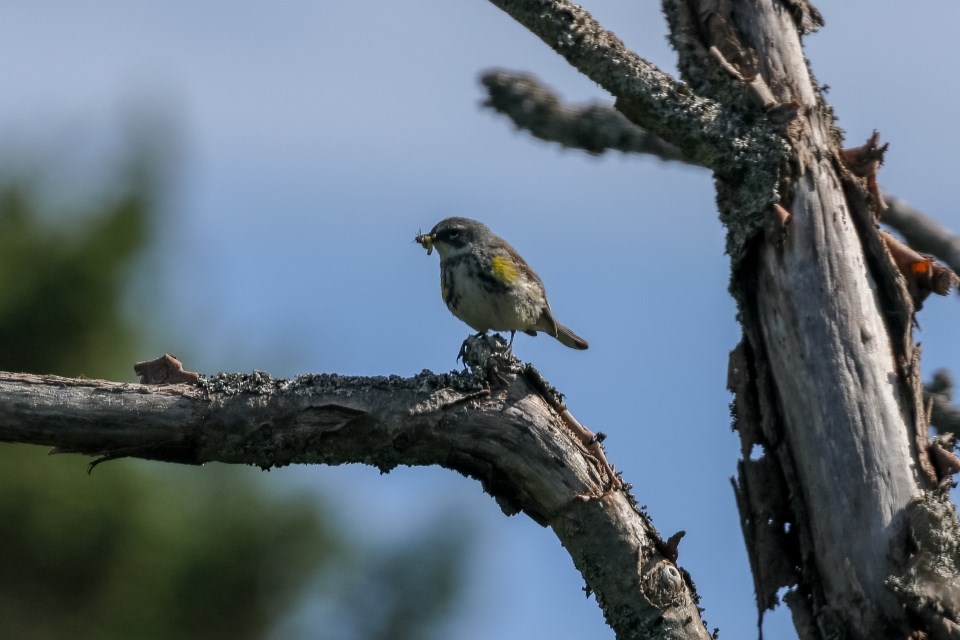Last updated: August 4, 2020
Thing to Do
Birding Schoodic Peninsula

Schoodic Peninsula is an excellent year round birding opportunity in Acadia National Park. This 2200 acre parcel of Acadia National Park located on the mainland near Winter Harbor is a premier birding destination when visiting Downeast Maine. Located one hour and ten minutes from the Hulls Cove Visitor Center, be prepared for at least a half day trip to truly dig into the multiple birding locations Schoodic Peninsula has to offer.

Will Greene, Friends of Acadia, NPS
The beginning of the Schoodic Loop Road is at the Schoodic Woods Campground. This is an excellent place to begin your activities. Spruce Grouse can sometimes be seen in the spring and summer around the hiking trails and biking paths that lead from the campground. White-throated Sparrow and Winter Wren are often heard singing around the campsites. For those who choose to stay in campground, Common Nighthawk are seen flying over at dusk.
Frazer Point is the next stop along the Schoodic Loop Road. Spring migration is the busiest time of year for birders frequenting Frazer Point. As the peninsula juts out into the ocean, Frazer Point is often one of the first places migrating birds can land after a night of flying. This mixed woods picnic area is excellent at attracting migrating warblers and other songbird species. In May, all twenty three species of warbler that breed or migrate through Acadia can be found around this picnic area including Bay-breasted Warbler and Blackpoll Warbler. Migrating flycatchers can often be found here as well with Least and Yellow-bellied Flycatcher often moving through. Frazer Point is located along the coast of Winter Harbor. It is a great place to see wintering ducks like Surf Scoter and Long-tailed Duck. Large quantities of wintering Common Loon and often Red-breasted Merganser also show up off Frazer Point as well.
Continuing down the peninsula on the loop road towards Schoodic Point keep a lookout for waterfowl along the coast. Black Scoter and White-winged Scoter can often be seen along the coast in the winter as well as Double-crested Cormorant and Black Guillemot in the summer. Always keep an eye out for Sharp-shinned Hawks and Cooper’s Hawk passing over the road hunting the large variety of songbirds that nest in the primarily spruce fir forests.
Schoodic Point is the iconic destination on Schoodic Peninsula. Jabbing out with ocean on all three sides makes the point a wonderful place for seabird watching. Northern Gannet and Common Eider are often present in the summer. Harlequin Duck and Black-legged Kittiwake can be found in the winter. In the fall, Schoodic Peninsula, a non-profit research facility and park partner, monitor migrating seabirds during their Schoodic Seawatch program. Red-throated Loon is a migrant often seen during these watches as well as multiple songbird and duck species.
The next stop along the loop is a small parking lot area called Blueberry Hill. This parking lot looks out over the ocean towards Schoodic Island. Schoodic Island is primarily a gull breeding colony with Herring Gull and Great Black-Backed Gulls. Bald Eagle also nest on the southern side of the island. In the winter, Northern Harrier, Rough-legged Hawk, and rarely Snowy Owl can be seen hunting the northern side of the island. Great Cormorant can also be seen hanging out on bell buoys in the channel between the island and Schoodic in the fall and early winter.
The final stretch of the Schoodic Loop road involves a variety of overlooks into the ocean. But as loop road nears the end of the park boundary there are a variety of coves that often hold Bufflehead, American Black-duck, and Common Goldeneye. These rocky coves have also produced Barrow’s Goldeneye and Purple Sandpiper in the past.
Notable Species: Caspian Tern, Black-backed Woodpecker, White-eyed Vireo
